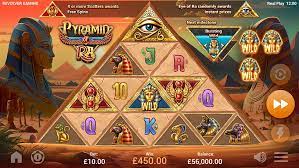The Hypercharged Pyramids of Ra represent an intersection between ancient Egyptian architecture, energy dynamics, and spiritual exploration. As we delve into this topic, we’ll uncover not only the historical significance of these magnificent structures but also their potential functions as energy conduits in our modern understanding BET88.
The Historical Significance of the Hypercharged Pyramids of Ra
The pyramids of Egypt have long captivated historians, archaeologists, and enthusiasts alike. Their grandeur speaks to a highly advanced civilization capable of monumental architectural feats Rút Tiền BET88.
Origins of Pyramid Construction
The origins of pyramid construction date back to the third dynasty of the Old Kingdom, around 2670 BCE. Initially, these structures began as simple mastabas, which were flat-roofed tombs. Over time, they evolved into the iconic pyramid shape we recognize today.
The early pyramids were constructed under the reign of Pharaoh Djoser, who commissioned the Step Pyramid at Saqqara. This structure marked a significant evolution in burial practices, moving from simple burials to elaborate tombs designed to help pharaohs ascend to the afterlife.
The reasons behind constructing these pyramids can be multifaceted. Predominantly, they were built as royal tombs, intended to protect the pharaoh’s body and possessions for the afterlife. Additionally, they symbolized power, religious beliefs, and the divine nature of kingship. They served as colossal statements of strength and stability, meant to communicate the eternal life of the pharaoh.
Architectural Marvels and Techniques
One of the most astonishing aspects of the pyramids is their construction methods. The Great Pyramid of Giza, one of the Seven Wonders of the Ancient World, consists of approximately 2.3 million blocks of stone, averaging 2.5 tons each. Interestingly, despite the lack of modern technology, ancient Egyptians employed innovative techniques to move and position these massive stones.
Most theories suggest that workers utilized sledges to transport the stones across sand, possibly lubricating the surface with water to reduce friction. This shows not only engineering prowess but also an understanding of materials and mechanics that many modern scholars underestimate.
Additionally, the alignment of the pyramids with celestial bodies showcases the Egyptians’ keen interest in astronomy. The Great Pyramid is aligned with incredible precision to the cardinal points of the compass, indicating a sophisticated understanding of geometry and cosmology.
Spiritual Symbolism and the Afterlife
Beyond their architectural significance, the Hypercharged Pyramids of Ra hold deep spiritual connotations. In ancient Egyptian belief, the pyramids served as gateways to the afterlife. The word “pyramid” itself stems from the Greek term “pyramis,” which refers to the shape of a fire or flame. This connection implies a transition from the physical world to the spiritual realm.
Egyptians believed that the soul of the deceased would journey through a series of trials after death, ultimately reaching the Field of Reeds, a paradise where one could live eternally. The layout of the pyramids often included mortuary temples, offering chambers, and pathways leading to the Nile River, which further highlights their importance in funerary rituals.
